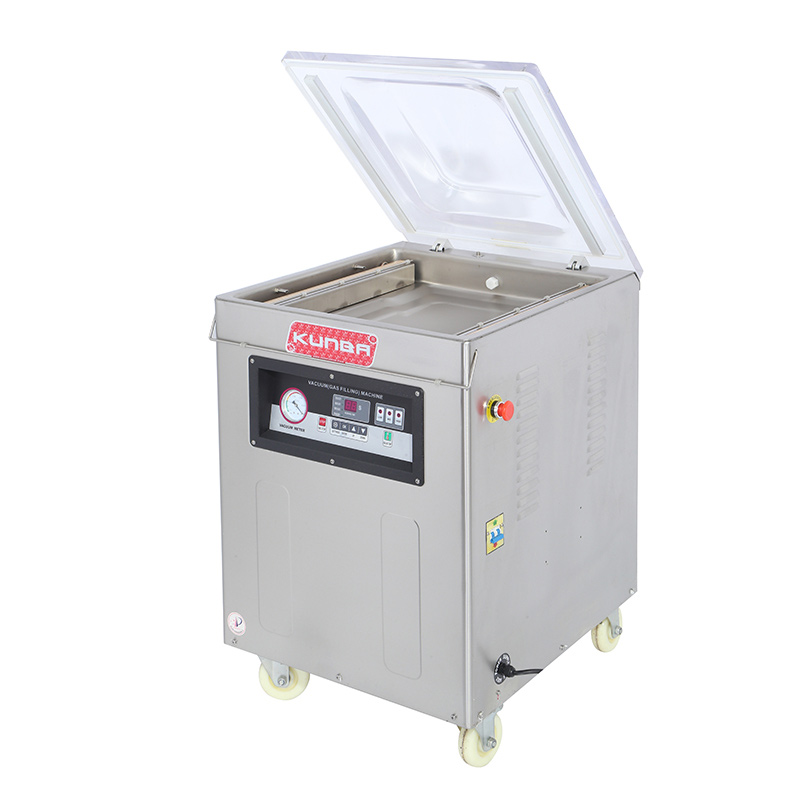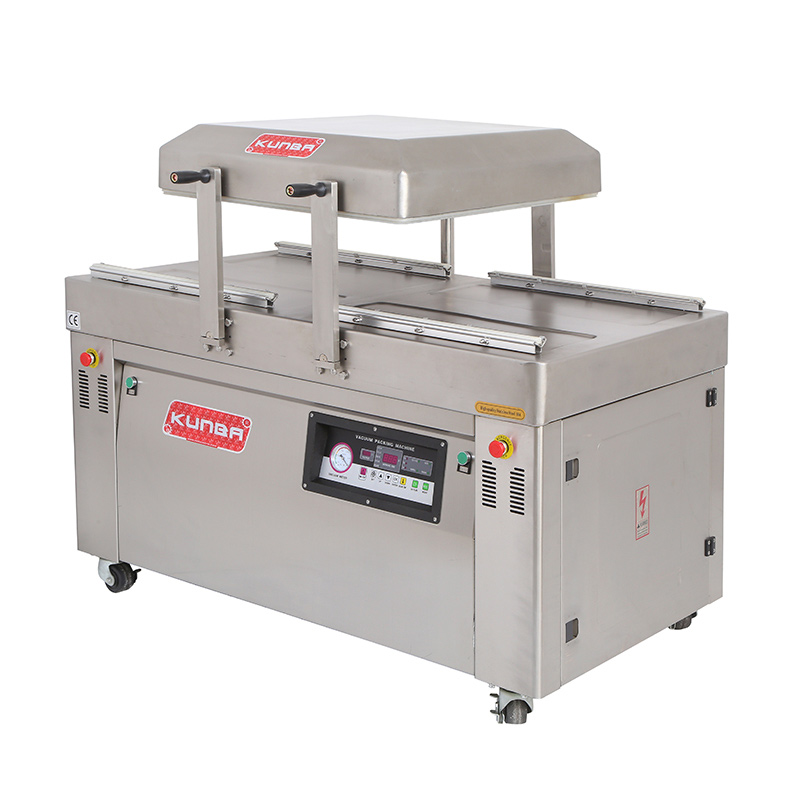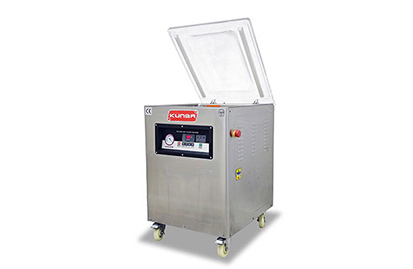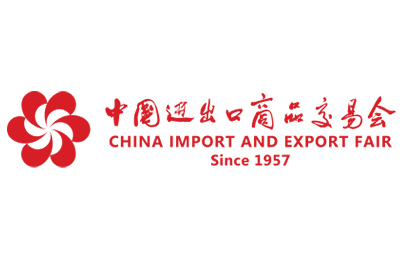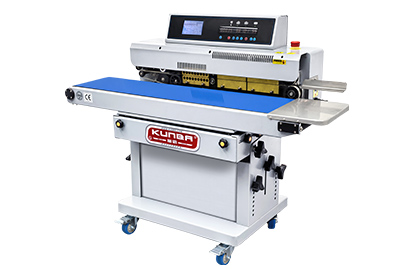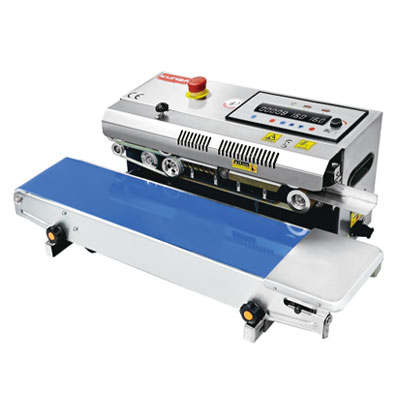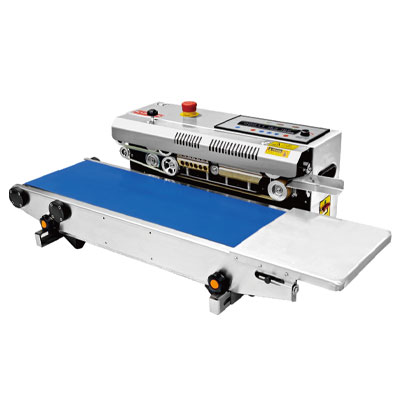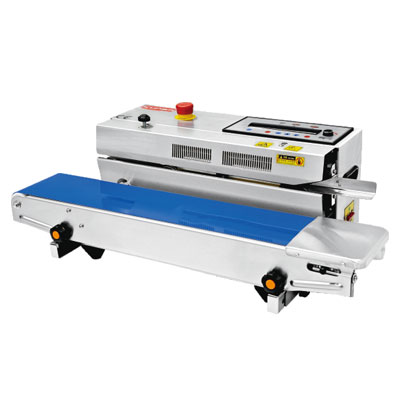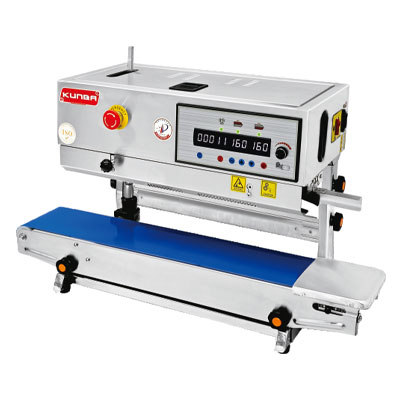Want to find out how KUNBA packaging machines can benefit you? Contact and consult our team of experts to find out about packaging solutions tailored to your needs!
Vacuum packing machines provide a practical solution for enhancing food preservation, offering significant advantages in maintaining quality and extending shelf life. These machines work by creating a vacuum seal around food, effectively limiting exposure to air which can lead to spoilage. This process not only inhibits the growth of spoilage-causing microorganisms but also keeps food fresher for longer periods.
Additionally, vacuum packing allows for more efficient use of storage space, making it easier to organize items in refrigerators or freezers. The versatility of these machines means they can cater to various food types—ranging from meats to dry goods—making them a valuable asset for both home users and commercial kitchens.
Understanding Vacuum Packing Machines and Their Role in Food Preservation
Vacuum packing machines are essential tools in the food preservation process. These devices remove air from packaging, significantly reducing the oxidation and microbial growth that can spoil food. By sealing food in airtight bags, they help maintain flavor, texture, and nutritional value over extended periods. The need for a reliable preservation method is growing as more people seek to reduce food waste and extend shelf life at home.
“Sealed properly, foods can last several times longer than usual.”
This technology is not limited to commercial use; businesses of all sizes can integrate vacuum packing into their food storage practices. From restaurants preserving leftovers to households vacuum sealing meal prep ingredients, these machines prove valuable in various settings. With increasing awareness of air exposure's impact on food, understanding vacuum packing machines becomes crucial for anyone looking to preserve their culinary investments effectively.
Key Benefits of Using Vacuum Packing Machines for Freshness and Longevity
Vacuum packing machines play a crucial role in maintaining the freshness and extending the longevity of food products.
-
1. Oxygen Removal: Reduces air to inhibit bacterial growth and oxidation.
-
2. Quality Preservation: Maintains food texture and flavor by preventing spoilage.
-
3. Freezer Burn Protection: Minimizes ice crystal formation in frozen foods.
-
4. Waste Reduction: Enables portion control and extends ingredient freshness.
-
5. Space Efficiency: Compresses package volume for optimized storage capacity.
Overall, the use of vacuum packing machines is a practical investment for anyone looking to preserve food quality systematically and effectively.
How Vacuum Packing Machines Improve Food Storage Efficiencies
By removing air from packaging, these machines significantly reduce the risk of spoilage and contamination from oxygen-borne bacteria and molds. This process not only extends the shelf life of perishable items but also minimizes food waste.
Moreover, vacuum-sealed products take up less space, allowing for more organized storage in refrigerators, freezers, and pantries. This efficiency is particularly beneficial for commercial kitchens and food manufacturers that need to manage inventory effectively. Vacuum packing supports portion control, enabling quicker access to individual servings while maintaining the integrity of the remaining product. As a result, these machines streamline food storage processes both at home and in professional settings.
Versatile Applications of Vacuum Packing Machines in the Food Industry
Vacuum packing machines serve a variety of roles within the food industry, enhancing operational efficiency and contributing to food safety.
-
1. Meat Processing: Seals freshness and inhibits bacterial growth.
-
2. Produce Preservation: Maintains texture and nutrients in fruits and vegetables.
-
3. Retail Display: Creates visually appealing product presentations.
-
4. Sous Vide Cooking: Ensures flavor preservation and consistent culinary results.
Overall, vacuum packing technology is proving to be invaluable for food manufacturers and consumers alike, fostering better preservation practices across the industry.
Innovative Technologies in Vacuum Packing Machine Design
Recent advancements in vacuum packing machine design have revolutionized the way food preservation is approached. Manufacturers are now leveraging cutting-edge technologies to improve functionality and user experience. Smart sensors and automated controls have enhanced precision during the sealing process, ensuring that the optimal vacuum level is achieved consistently.
Additionally, energy-efficient systems reduce power consumption while maintaining high performance levels. Another noteworthy innovation is the incorporation of user-friendly interfaces, allowing operators to easily adjust settings based on the type of food being preserved.
|
Feature |
Traditional Design |
Innovative Design |
|
Sealing Method |
Manual |
Automated |
|
Energy Efficiency |
Low |
High |
|
User Interface |
Basic |
Touchscreen/Smart |
|
Functionality |
Limited |
Multi-functional |
These advancements not only promote better preservation of food items but also align with industry trends towards sustainability by reducing waste and improving storage capabilities. With a burgeoning focus on technology, vacuum packing machines are equipped to meet evolving consumer demands while enhancing overall efficiency in food storage practices.
Comparing Traditional Preservation Methods with Vacuum Packing Techniques
Traditional food preservation methods often involve techniques such as canning, freezing, and using preservatives. While these methods can effectively prolong the shelf life of food, they may not be as efficient as vacuum packing.
Unlike freezing, which can alter the texture and flavor of certain foods, or canning, which requires lengthy preparation and may affect nutrient content, vacuum packing removes air to create a sealed environment. This minimizes oxidation and microbial growth without changing the food's original properties. Furthermore, vacuum packing allows for better storage in compact spaces due to its ability to reduce the bulkiness of food items.
In contrast to traditional methods that may require careful monitoring and specific conditions to maintain quality, vacuum packing offers a straightforward and reliable way to ensure freshness over an extended period.
Maximizing Shelf Life: The Science Behind Vacuum Packing Machines
Vacuum packing machines work by removing air from packaging, which plays a critical role in food preservation. When air is eliminated, oxidation processes that cause spoilage are greatly reduced. This extends the shelf life of food items significantly. The absence of oxygen helps prevent the growth of bacteria, mold, and yeast, all of which thrive in aerobic environments.
Furthermore, vacuum packing minimizes moisture loss and prevents freezer burn for items stored in cold environments. This technology relies on precise sealing techniques that create a tight seal around the food, ensuring that neither air nor moisture can enter. By maintaining an optimal storage condition, vacuum packing machines contribute to maintaining the texture and flavor of various food products over extended periods.
Common Misconceptions about Vacuum Packing Machines and Their Uses
Many people hold misconceptions about vacuum packing machines, often seeing them as overly complex or only suitable for commercial use. In reality, these machines are designed for both home and professional settings, making food preservation accessible to everyone. Another common myth is that vacuum packing is only effective for meat and perishable items. While these foods benefit significantly from vacuum sealing, the technique also works wonders for dry goods, spices, and even fruits.
Some assume that vacuum packing will eliminate all spoilage, but it's important to note that while it extends shelf life, it does not stop all forms of degradation. Additionally, many individuals believe that using a vacuum packing machine requires special bags or equipment. In truth, a variety of compatible bags are available that suit different needs and budgets.
Understanding these aspects can encourage more people to utilize this efficient food preservation method effectively.
Conclusion
Vacuum packing machines represent a transformative solution in food preservation, offering numerous advantages that cater to both home cooks and commercial food operations.
As the technology continues to evolve, vacuum packing will likely become even more refined, integrating smart features and energy-saving capabilities. These advancements will further solidify vacuum packing as an essential practice in both kitchens and food industries. Ultimately, understanding and utilizing vacuum packing machines can lead to significant cost savings by minimizing waste while ensuring that meals remain fresh and flavorful for longer periods.
Act now!
Contact our customer service team for free shopping guides and the latest product catalogs!



